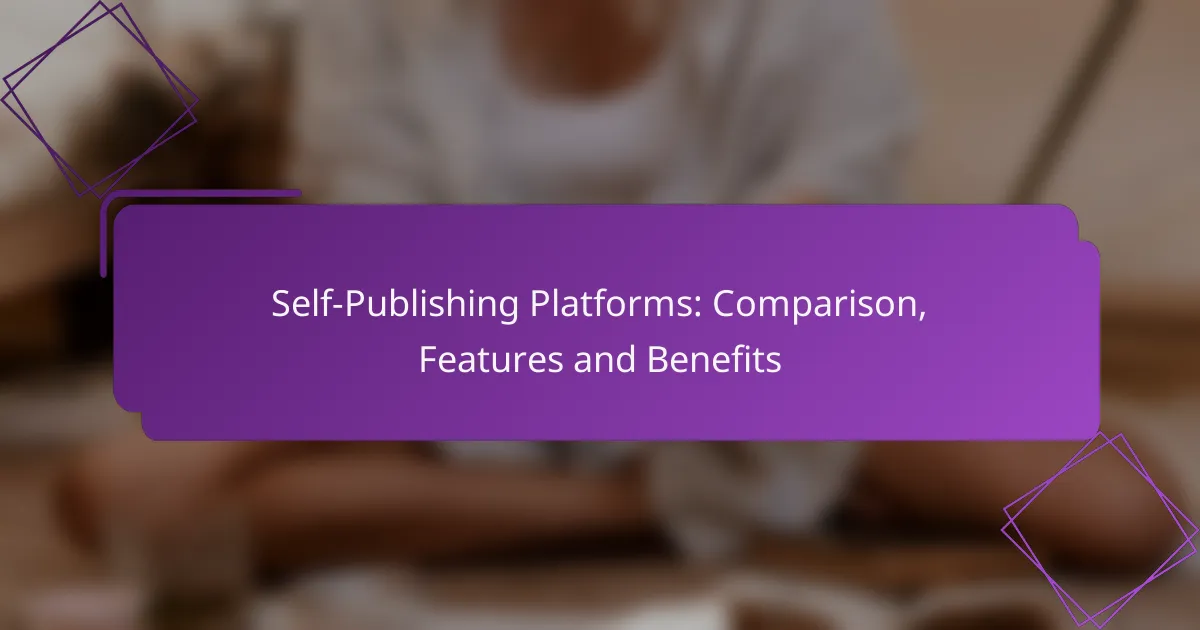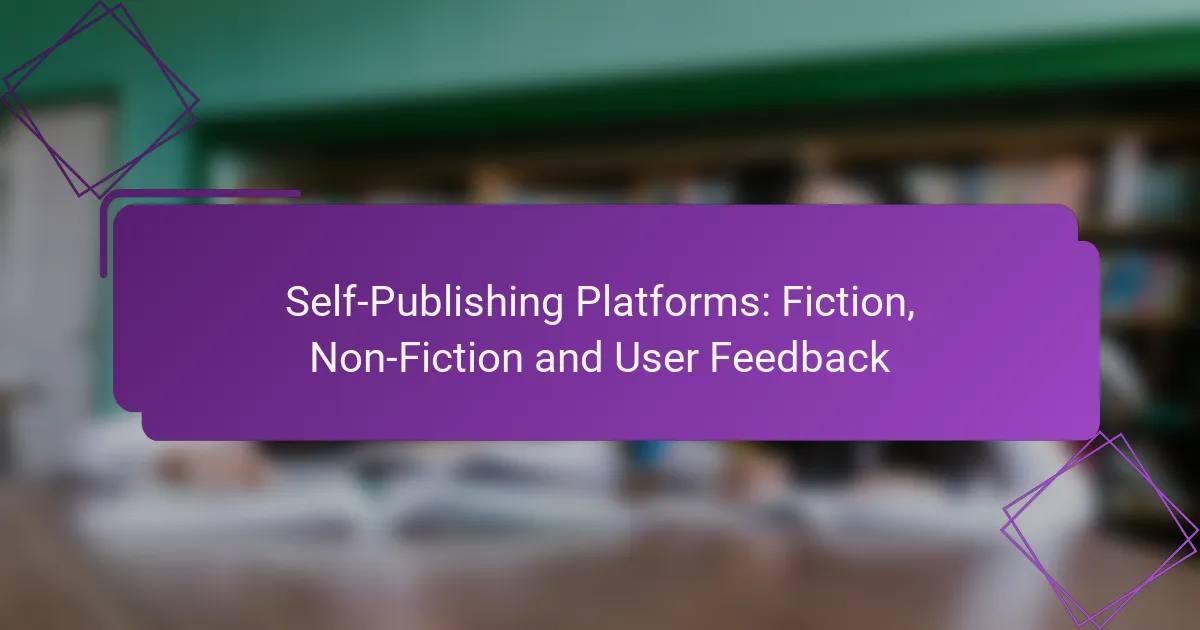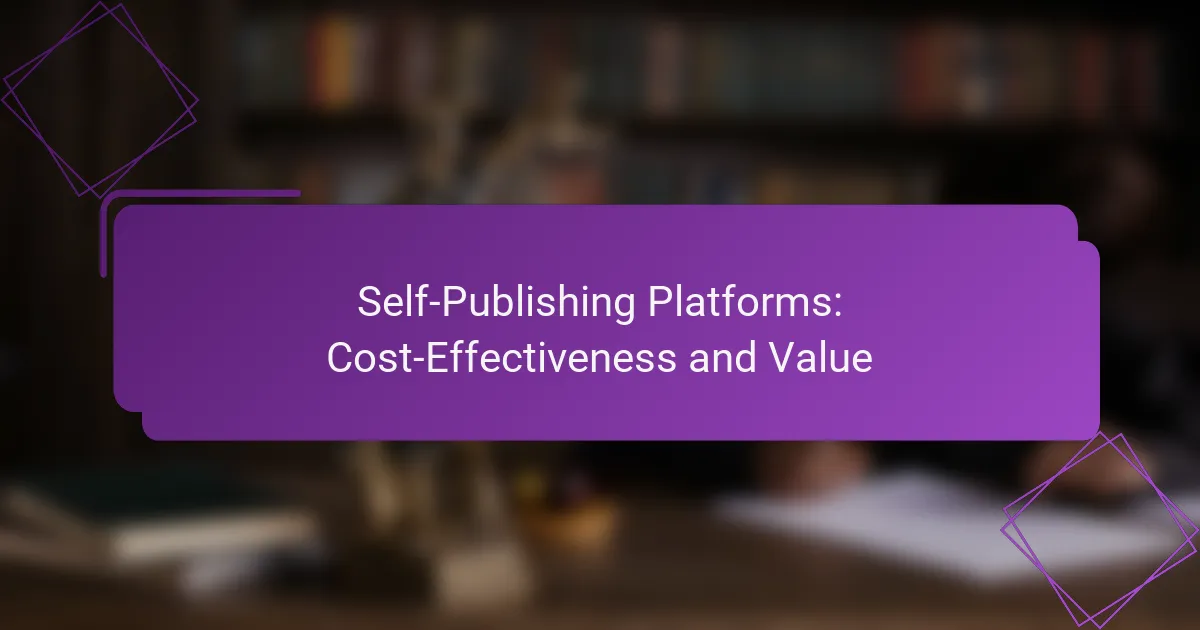Choosing the right self-publishing platform is crucial for authors looking to maximize their reach and revenue. With options like Amazon Kindle Direct Publishing, IngramSpark, and Smashwords, each platform offers distinct features tailored to different publishing goals. By evaluating aspects such as distribution options, royalty structures, and user support, writers can find the best fit for their needs and take charge of their publishing journey.

Which self-publishing platforms are the best options?
The best self-publishing platforms vary based on your goals, target audience, and distribution needs. Popular choices include Amazon Kindle Direct Publishing, IngramSpark, Smashwords, Kobo Writing Life, and Draft2Digital, each offering unique features and benefits for authors.
Amazon Kindle Direct Publishing
Amazon Kindle Direct Publishing (KDP) is a leading platform for self-publishing eBooks and paperbacks. It allows authors to reach millions of readers on Amazon, with options for both digital and print formats.
KDP offers a straightforward setup process, with authors retaining up to 70% of royalties on eBooks priced between $2.99 and $9.99. However, exclusivity with KDP Select can limit distribution to other platforms.
IngramSpark
IngramSpark is ideal for authors looking to distribute print books and eBooks globally. It connects authors with a vast network of retailers and libraries, enhancing visibility beyond Amazon.
While IngramSpark has a setup fee, it provides extensive distribution options and higher quality print products. Authors should consider the initial costs against the potential for broader market reach.
Smashwords
Smashwords is a user-friendly platform that specializes in eBook publishing. It distributes to various retailers and libraries, making it a good choice for authors seeking diverse outlets.
Authors can set their own prices and benefit from a royalty rate of around 60% to 80%. However, formatting requirements can be strict, so authors should ensure their manuscripts meet the platform’s guidelines.
Kobo Writing Life
Kobo Writing Life is a self-publishing platform that focuses on eBooks, particularly popular in Canada and Europe. It offers authors the chance to publish quickly and reach a global audience.
With Kobo, authors can earn up to 70% royalties on eBooks priced above a certain threshold. The platform also provides promotional tools to help boost visibility and sales.
Draft2Digital
Draft2Digital simplifies the self-publishing process by allowing authors to publish eBooks across multiple platforms with one upload. It distributes to major retailers like Apple Books, Barnes & Noble, and Kobo.
Authors enjoy a user-friendly interface and can earn around 60% royalties. Draft2Digital also offers free formatting services, making it an attractive option for those new to self-publishing.
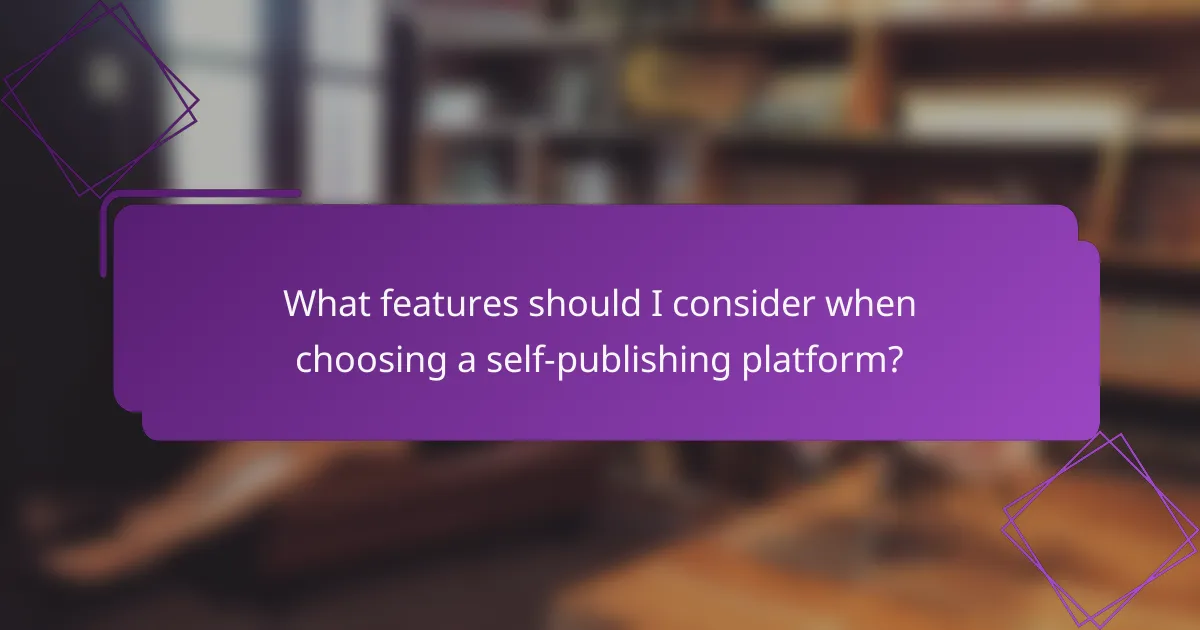
What features should I consider when choosing a self-publishing platform?
When selecting a self-publishing platform, consider features that directly impact your book’s reach, revenue, and ease of use. Key aspects include distribution options, royalty structures, user interface, formatting tools, and customer support.
Distribution options
Distribution options determine where your book can be sold and how widely it can reach potential readers. Look for platforms that offer access to major retailers like Amazon, Barnes & Noble, and Apple Books, as well as options for global distribution.
Some platforms may allow you to publish in multiple formats, such as eBooks and print-on-demand, which can enhance your visibility. Evaluate whether the platform has partnerships with libraries or subscription services, as this can further expand your audience.
Royalties and pricing
Royalties refer to the percentage of sales you earn from your book, and pricing structures can vary significantly between platforms. Most self-publishing platforms offer royalties ranging from 35% to 70%, depending on the price point and distribution choices.
Consider the platform’s pricing model, including any upfront costs or fees for services like editing and cover design. Understanding these financial aspects will help you calculate your potential earnings and make informed decisions.
User interface and ease of use
A user-friendly interface is crucial for a smooth publishing experience. Look for platforms that provide intuitive navigation and clear instructions for uploading your manuscript, setting prices, and managing your account.
Some platforms offer guided publishing processes, which can be especially helpful for first-time authors. Read reviews or try out demo versions to assess how easy it is to navigate the platform before committing.
Formatting tools
Formatting tools help ensure your book looks professional across various formats and devices. Many self-publishing platforms provide built-in formatting options that allow you to customize your book’s layout and design without needing advanced technical skills.
Check if the platform supports popular formats like EPUB and MOBI, and whether it offers templates for print books. If you prefer more control over formatting, consider platforms that allow you to upload your own formatted files.
Customer support
Reliable customer support can make a significant difference in your publishing journey. Look for platforms that offer multiple support channels, such as email, chat, and phone assistance, along with comprehensive FAQs and resources.
Consider the availability of support in your preferred language and time zone, especially if you are publishing internationally. Good customer support can help you resolve issues quickly and keep your publishing process on track.
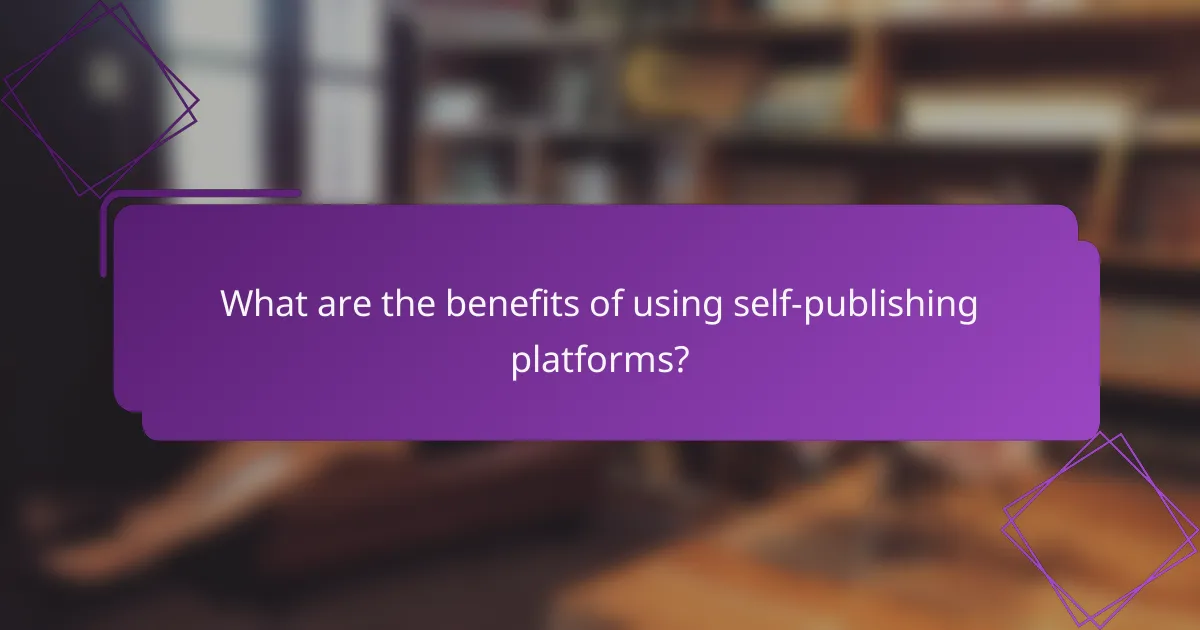
What are the benefits of using self-publishing platforms?
Self-publishing platforms offer authors significant advantages, including creative autonomy, higher earnings, and quicker access to global markets. These benefits empower writers to take control of their publishing journey and maximize their potential revenue.
Creative control
Self-publishing platforms allow authors to maintain full creative control over their work. This includes decisions on content, cover design, formatting, and pricing. Unlike traditional publishing, where authors often have to compromise, self-publishing lets writers express their vision without external constraints.
By retaining creative control, authors can tailor their work to specific audiences or niches, enhancing their chances of success. They can also update or revise their content as needed, responding to reader feedback or changing market trends.
Higher royalties
Authors using self-publishing platforms typically enjoy higher royalty rates compared to traditional publishing. While traditional publishers may offer royalties ranging from 10% to 15%, self-publishing platforms often provide royalties between 60% and 80% of sales. This significant difference can lead to greater earnings for authors.
For example, if a self-published book sells for $10, the author might earn $6 to $8 per sale, whereas a traditionally published author could earn only $1 to $1.50. This financial incentive encourages many writers to explore self-publishing as a viable option.
Faster publication process
The self-publishing process is generally much faster than traditional publishing, which can take months or even years. Authors can publish their work within days or weeks, depending on their preparation and the platform used. This speed allows writers to capitalize on trends or timely topics effectively.
Additionally, self-publishing platforms often provide streamlined tools for formatting and uploading content, making the process more efficient. Authors can quickly make changes or release new editions without lengthy approval processes.
Global reach
Self-publishing platforms enable authors to reach a global audience with ease. Most platforms distribute books to multiple online retailers, including Amazon, Apple Books, and others, making it possible for readers worldwide to access the work. This broad distribution increases visibility and potential sales.
Furthermore, many platforms offer options for translating books into different languages, further expanding an author’s reach. This global access can significantly enhance an author’s market presence and revenue potential.
Access to marketing tools
Self-publishing platforms often provide authors with various marketing tools to promote their work effectively. These tools may include promotional pricing options, social media integration, and email marketing features. Such resources help authors connect with their audience and boost sales.
Authors can also leverage analytics provided by these platforms to track sales performance and understand reader preferences. This data can inform future marketing strategies and content creation, allowing authors to refine their approach and maximize their impact.
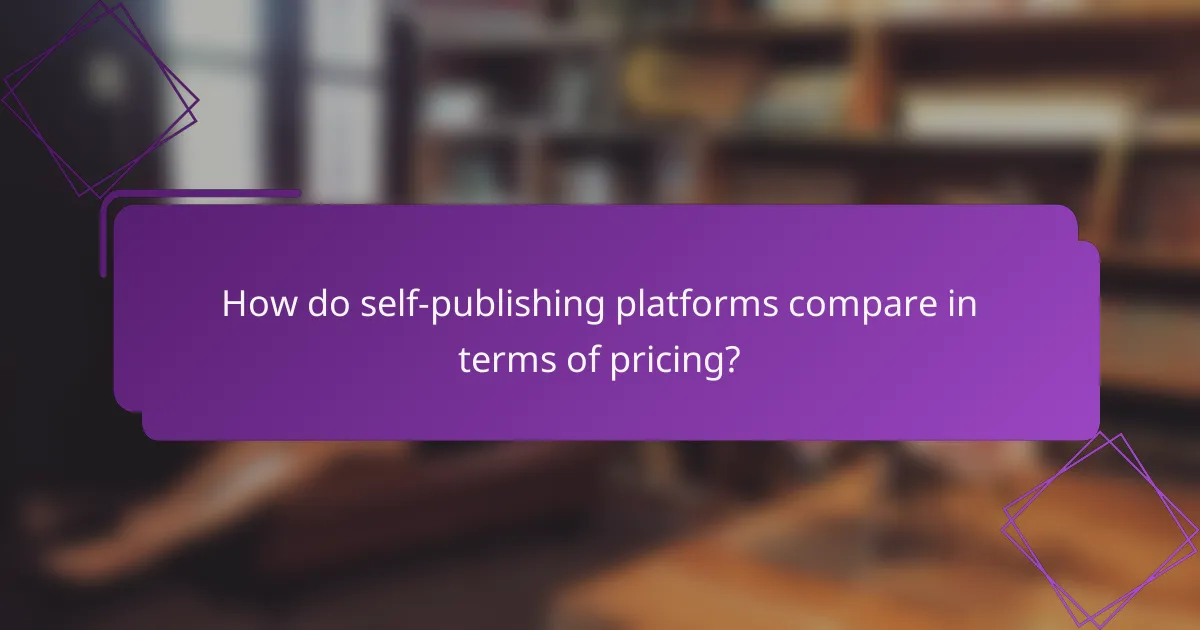
How do self-publishing platforms compare in terms of pricing?
Self-publishing platforms vary significantly in pricing structures, affecting authors’ potential earnings and upfront costs. Key factors include setup fees, royalty percentages, and additional costs for services like distribution and marketing.
Amazon Kindle Direct Publishing fees
Amazon Kindle Direct Publishing (KDP) operates on a royalty model, offering authors 35% or 70% royalties depending on the book’s price and distribution choices. There are no upfront fees to publish, but authors must price their eBooks between $0.99 and $200 to qualify for the 70% royalty rate.
Additionally, KDP charges delivery fees for eBooks based on file size, typically a few cents per download. Authors should consider these costs when pricing their books to ensure profitability.
IngramSpark setup costs
IngramSpark requires authors to pay a setup fee, which can range from $49 to $99 per title, depending on promotional offers. This platform provides extensive distribution options, allowing authors to reach bookstores and libraries globally.
While there are no ongoing fees, authors should be aware of additional costs for changes to their titles or cover designs. IngramSpark also offers a variety of print options, which can influence overall pricing based on the chosen specifications.
